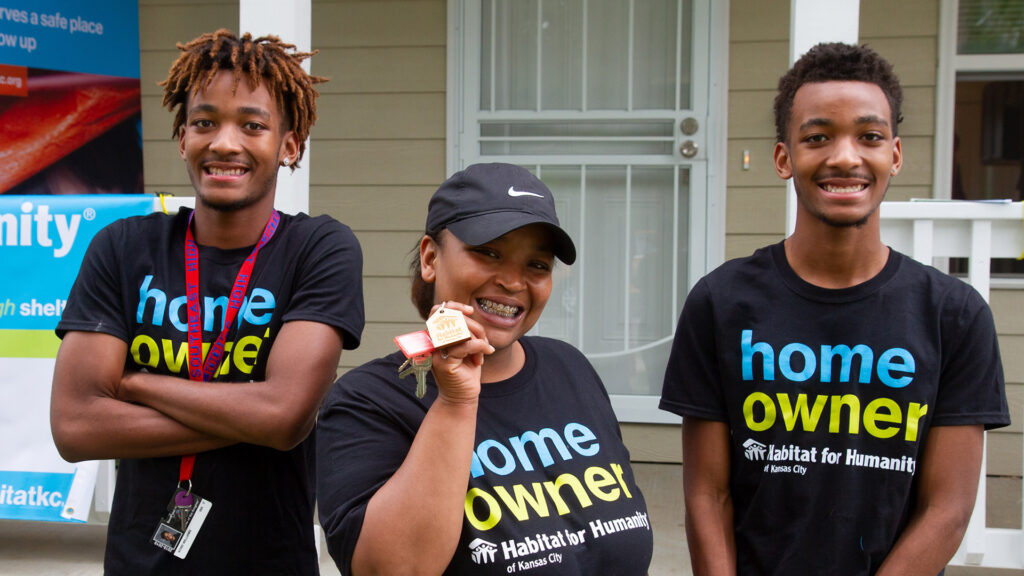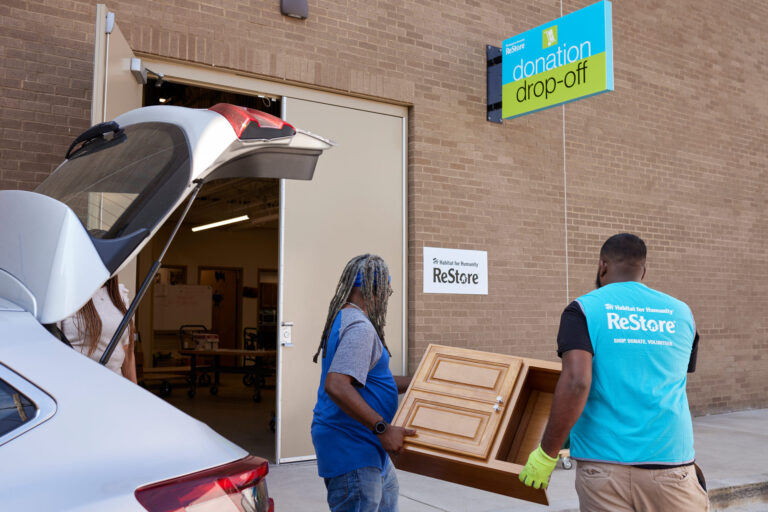Fourteen single-family homes will be built. The homes will be single-family, detached homes that align with the current zoning requirements and will range from 1400-2400 square feet.

Pathway at HEritage Park
attainable housing in johnson county
Creating a Thriving Community
To combat the ever-rising cost of living, Habitat KC has partnered with the Johnson County and Olathe governments to develop the Pathway at Heritage Park Neighborhood. This new construction development will include green space featuring walking paths and a community garden. Habitat KC will build 14 affordable homes available to families struggling to live and work in Kansas’ most wealthy county.

Olathe Construction Updates

Why We’re Building in Johnson County
In Johnson County, Kansas, 40% of all renters pay more than 30% of their income on housing. These families and individuals are often forced to make impossible choices between a safe place to call home and healthcare, healthy food and their child’s education.
With the average selling price of homes in Johnson County approaching $500,000, far too many families have been priced out of the community. Pathway at Heritage Park offers a way for Johnson County workers to live and raise their children in the community they serve, and it’s just the beginning.
Upcoming Volunteer Events in Olathe
You can find all of our individual opportunities here.
Support attainable housing in Johnson County.
Pathway at Heritage Park FAQs
Yes, new sidewalks and street lights will be installed.
Homes in a land trust cannot be used for an appraisal comp for a real estate transaction outside of the land trust. The development will not impact home values.
Yes, homeowners will be responsible for property taxes. All property taxes and insurance payments are escrowed and paid through Habitat KC.
Community land trusts (CLTs) are nonprofit organizations governed by a board of CLT residents, community residents, and public representatives that provide lasting community assets and shared equity homeownership opportunities for families and communities. CLTs develop rural and urban agriculture projects, commercial spaces to serve local communities, affordable rental and cooperative housing projects, and conserve land for urban green spaces. However, the heart of their work is the creation of homes that remain permanently affordable, providing successful homeownership opportunities for generations of lower-income families.
There are over 225 community land trusts in the United States.
A typical community land trust for affordable housing works like this:
- A family or individual purchases a house that sits on land owned by the community land trust.
- The purchase price is more affordable because the homeowner is only buying the house, not the land.
- The homeowners lease the land from the community land trust in a long-term (often 99-year), renewable lease.
- The homeowners agree to sell the home at a restricted price to keep it affordable in perpetuity, but they may be able to realize appreciation from improvements they make while they live in the house.
Community land trust homeowners receive their equity back, just like in a market rate home. The difference is in the market appreciation. Instead of being able to retain 100% of the market appreciation of the home, they retain 25% of the market appreciation. The remaining 75% of market appreciation stays with the home to keep the price affordable for the next buyer.
- Two years of steady, verifiable income
- Ability to afford a mortgage payment of 30% of gross monthly income
- One year of good rental history
- Less that $1,000 in non-medical collection debt
- Two years since the completion of a bankruptcy or foreclosure
- Zero unpaid judgements
- Ability to pass a criminal background and sex offender check
- Ability to pay a minimum of $1,200 for closing costs
- US Citizen or permanent resident
Pathway Church has always had a vision to have affordable housing on the land surrounding their church. They approached Habitat KC to partner with them in the endeavor a year ago due to the organization’s housing expertise. Habitat KC’s Construction Committee (which includes developers, builders, and architects) analyzed and determined it was a good location for a pocket neighborhood.
The homes being built will not be in the floodplain. Habitat is completing an extensive environmental review and working with an engineering team to determine water flow.


